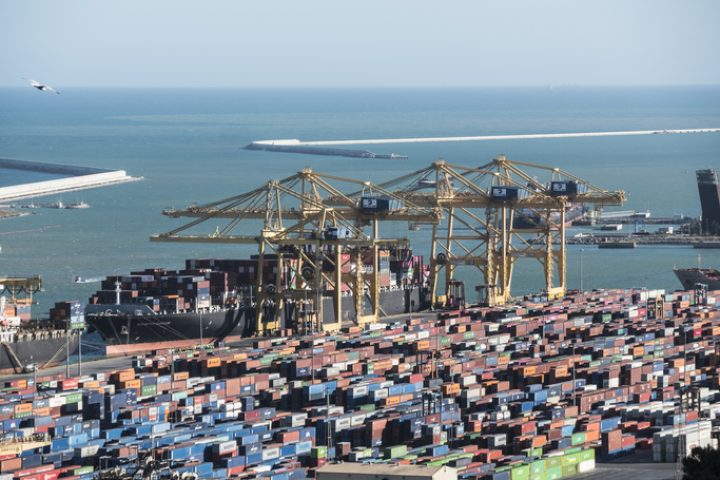Parties including the Port of Barcelona have laid out its progress report for an Intermodal Logistics Terminal at the port as the city looks to commit further to rail expansion.
On 16 November the Port, the Generalitat de Catalunya (regional government) and the city councils of Barcelona and El Prat de Llobregat agreed on the Urban Master Plan (UMP) for the intermodal terminal, creating four new railway terminals and highways access.
The logistics investment will involve a public committal of €600 million ($677 million), and an additional €30 million ($33 million) for railway sidings between Barcelona-Zaragoza.
Located at the port’s southern area, the railway node includes a railroad terminal, a reception and shipment terminal, and a loading and unloading terminal located in the former bed of the Llobregat River.
The node occupies 68 hectares and is one of the nodes of the Mediterranean Corridor.
The infrastructure envisioned in the UMP, together with existing infrastructure nearby (including the BEST rail terminal on Prat wharf and the already completed and operational Terminal C for shipment and reception) will form six-terminal rail node to serve the Port of Barcelona and the surrounding area.
In 2020, rail traffic in the Port of Barcelona was 269,304 TEU, with a 15% rail share of containers and 42% rail share of vehicles.
The Intermodal Logistics Terminal is expected to make it possible to shift about 400,000 containers and 46,000 semi-trailers from road to rail every year.

The committal from the Port of Barcelona to rail transport indicates the intermodal’s benefits in competition and sustainability value.
In the last 10 years, the port’s intermodal strategy has meant 2.8 million fewer truck journeys.
In 2020, rail traffic in the port area kept 175,000 trucks off the road, the equivalent of 700 fewer trucks on the road every day.
This drop in road traffic meant 42,700 fewer tonnes of CO2 were released and 14 million fewer litres of fuel burned.
President of the Port of Barcelona, Damià Calvet, commented, “The economy of Catalonia needs a more efficient, competitive and sustainable Port of Barcelona.
“With this urban planning instrument, agreed by the four competent administrations, we are laying the groundwork for the railway and road accesses and the railway node”.
Janet Sanz, Deputy Mayor for Ecology, Urban Planning, Infrastructure and Mobility, added, “This UMP is an example of a new way to manage the port-city that incorporates new green and sustainable industry, sustainable public infrastructure and co-leadership between large institutions like the Port of Barcelona, City Councils and the Generalitat in the service of the public interest.”



